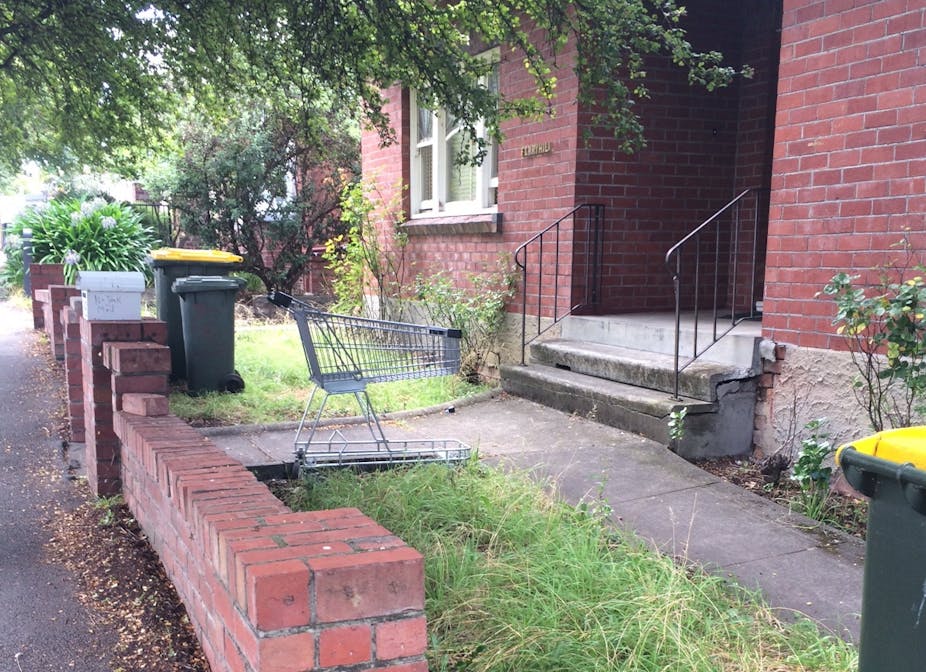Australia needs to have a housing conversation that isn’t just about housing “bubbles”, profits and investment properties. Sadly, we punch well above our weight in international measures of poor housing affordability, and increasing numbers of Australians can’t afford their rents or mortgages.
Even a modest increase in house prices will make things even tougher for these Australians – but importantly, do we reliably know who they are, where they live, and how extreme their affordability problems are?
Our new research reveals some poorly understood distinctions in unaffordable housing. Some people appear to be “slipping” in and out of housing affordability problems, while others remain “stuck” with them for long periods, or even a lifetime.
When we look at housing affordability in this way and compare these two groups of people, these “slipper” and “sticker” groups are shown to be very different within Australian society, with different intervention needs implied.
Limitations of the 30/40 rule
To address housing affordability and target assistance we usually rely on data on the prevalence and nature of unaffordable housing. The most widely used measures of housing affordability are based on simple ratios, for example, the 30/40 measure. This approach classifies people as being in unaffordable housing if they are in the lower 40% of the income distribution and their rent or mortgage payments exceed 30% of their income.
Such a simple, straightforward measure - that classifies people as being either in unaffordable housing or not – is undoubtedly useful, and outside of the housing research community, data using these measures are rarely questioned. But it’s useful to think about that data a little more critically.
The picture of housing affordability portrayed by most of the measures we (and policy makers) rely on is a snapshot – a point-in-time collection of people’s ability to afford their housing (on Census night for example). Importantly, it’s a very blunt measure. In fact, when we look more closely at people’s experience of affordability problems we see that the snapshot is a pretty poor predictor of longer-term unaffordability.
For a great many households, both income and housing costs - and where they sit relative to other households - change a lot over time. This causes people to slip in and out of unaffordable housing. In a large Australian sample, we see that hidden within the segment of the population classified as being in unaffordable housing in any one year, fewer than half were classified in the same way the next year. Because the total number of people counted in unaffordable housing is stable, it points to a limitation in the way that we measure housing affordability.
Slippers and stickers
By following people’s income and housing costs each year for a five year period, we classify stickers as being in unaffordable housing (using the 30/40 rule) in every one of the five years. To be classified as a slipper, people must have made at least one transition into, and one out of, unaffordable housing over the five year period. Slippers outnumber stickers three to one, and therefore affordability initiatives may be more concentrated upon the needs of slippers.
Compared to slippers, stickers have much lower incomes and employment rates. Around 60% of stickers have a disability, and stickers are twice as likely as slippers to be carers for other people in their household. Looking deeper, three quarters of those stuck for long periods in unaffordable housing are women, they also tend to be much older than slippers, and more likely to live alone.
This description points to what some might call a vulnerable group of people or even an “underclass” perpetually facing housing affordability issues and, most likely subject to the consequences of this, such as limited financial resources and stress.
It is interesting to note that the characteristics of the sticker population are very similar to those of Australia’s public housing tenant population, but because public housing largely addresses affordability by rent capping, stickers are most likely to be private renters and low income mortgage holders.
This means that, in addition to being highly vulnerable, many stickers are likely to receive little or no government assistance with their housing costs. It also implies a pressing need to improve the supply and affordability of housing in the private sector - via the taxation system or the land supply system.
Rather than looking at housing affordability as one problem, the distinct differences observed between Australia’s slippers and stickers imply a need to focus particular attention and interventions on stickers. We also need to better understand how people enter and exit unaffordable housing and what we can do to prevent people becoming stuck.
In the bigger picture our findings describe real social inequalities in Australia that are present and persistent. It reminds us that the conversation we need to have about housing affordability in Australia isn’t just about the positives of “housing bubbles”, but also needs to be about how to address the serious affordability problems of the growing group of (often already vulnerable) Australians who are stuck.

